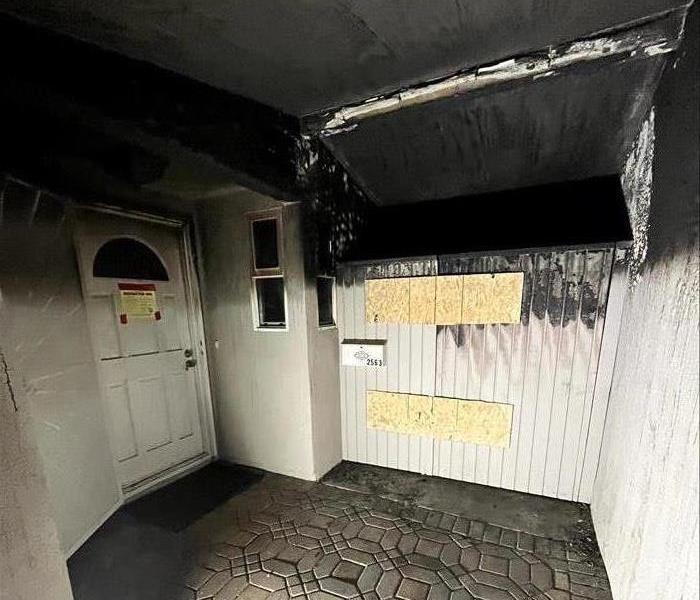Recent Posts
Essential Steps to Take During a House Fire: A Comprehensive Guide
12/19/2024 (Permalink)
Facing a house fire is one of the most frightening situations anyone can encounter. In such emergencies, quick thinking and having a well-rehearsed plan can make a critical difference. Here’s a guide to help you know exactly what to do in case of a house fire to keep yourself and loved ones safe.
1. Stay Calm and Assess the Situation
When you notice signs of a fire—such as the smell of smoke, flames, or a smoke detector going off—it's natural to feel panicked. But staying calm will help you think more clearly and act faster. Take a deep breath and quickly assess your situation.
- Evaluate the fire’s size: If the fire is small (like a small kitchen fire), you might be able to safely use a fire extinguisher if you are trained.
- Evacuate immediately if the fire has spread, is blocking exits, or if smoke is filling your home quickly.
2. Alert Others
In a fire, every second counts. Make sure everyone in the house is aware of the fire and begins to exit.
- Yell for help or notify others loudly. Fire can spread very quickly, so it’s crucial to alert everyone immediately.
- Assign someone (such as an older child or adult) to assist anyone who needs help, like children or elderly family members.
3. Get Out and Don’t Look Back
Your priority in a house fire is to leave the premises as quickly and safely as possible.
- Use your escape plan: Hopefully, you’ve created an escape plan in advance. Stick to the planned route if possible. If you haven’t, exit through the closest, safest route available.
- Avoid using elevators: Elevators can become dangerous during a fire. Use the stairs or other safe exits.
- Stay low to avoid smoke: Smoke rises, so staying low to the ground can help you avoid inhaling smoke. Crawl if necessary, especially if there’s heavy smoke.
- Check doors before opening: Touch the doorknob with the back of your hand. If it’s hot, there could be fire on the other side. Instead, find an alternate escape route.
4. Call 911 Once You’re Outside
Once you’re safely outside and a good distance away from the building, call 911. Provide them with your location, explain that there’s a fire, and if possible, tell them if anyone is still inside.
5. Never Go Back Inside
No matter what, do not re-enter a burning building to retrieve items or pets. Once you’re out, wait for the fire department to arrive. Firefighters are trained to handle rescues and are equipped with gear that will protect them in these situations.
6. Seek Medical Attention If Needed
Even if you feel fine, smoke inhalation and burns can sometimes have delayed symptoms. If you or anyone in your family was exposed to smoke or fire, consider visiting a doctor or hospital for a check-up.
7. Contact Your Insurance Company and a Restoration Service
Once the fire is out, contact your insurance company to report the incident. They can guide you on the next steps for claims. In addition, reach out to a professional restoration company, like SERVPRO of Laguna Beach, for help assessing damage, performing cleanup, and restoring your home to its original state. Preparation and awareness can make a huge difference in a fire emergency. By knowing these steps and discussing them with your family, you can be better equipped to protect yourself and your loved ones.
Mold in Drywall: How to Identify and Repair with SERVPRO®
11/21/2024 (Permalink)
Mold in drywall can be a serious issue for homeowners. As a porous material, drywall readily absorbs moisture, making it an ideal breeding ground for mold when exposed to water. Whether it’s from a leak, flood, or high humidity, mold can quickly take hold, often going unnoticed until significant damage has occurred. Proper identification and repair of mold in drywall are crucial to preventing long-term structural issues and costly repairs. This blog will guide you through how to identify mold in drywall and the steps involved in repairing it, with expert assistance from SERVPRO®, your trusted mold remediation partner.
Identifying Mold in Drywall
Mold is not always easy to spot, especially when it’s growing behind walls or in less visible areas. However, certain signs can help you detect it early.
- Discoloration: Mold often causes dark spots or patches to appear on your drywall. These patches can be black, green, or brown and may start small before expanding.
- Musty Odor: Even if you don’t see mold, you might smell it. A musty odor in rooms with high moisture levels can indicate hidden mold behind walls or in areas that are difficult to see.
- Bubbling or Warping: When drywall becomes saturated with moisture, it may start to bubble, warp, or crack. This is a sign that water has penetrated the surface, and mold growth is likely behind or within the drywall.
- Peeling Paint: Paint that peels or flakes from the drywall can be another indication of moisture problems and potential mold growth.
If you notice any of these signs, it’s crucial to take immediate action. Mold can spread quickly, compromising both the aesthetic and structural integrity of your home.
Repairing Mold in Drywall
Once mold is identified, addressing it properly is essential to prevent further damage. Simply cleaning the surface isn’t enough when mold penetrates drywall, as the spores can easily regrow if moisture remains. Here’s a step-by-step outline for repairing mold-affected drywall:
1. Stop the Source of Moisture
Before any mold remediation can take place, it’s critical to address the underlying cause of moisture. Whether it’s a leaking roof, a plumbing issue, or excessive humidity, the source must be fixed to prevent future mold growth.
2. Remove Affected Drywall
In many cases, mold has penetrated the surface of the drywall, making it necessary to remove the affected sections. This may involve cutting away parts of the drywall to access and remove the contaminated material. SERVPRO’s trained professionals can assess the extent of the damage and safely remove the mold-affected drywall without spreading mold spores to other areas of your home.
3. Treat the Area for Mold
After removing the damaged drywall, the area must be thoroughly treated to kill any remaining mold spores. This involves using specialized cleaning agents and mold inhibitors to ensure that the mold does not return. SERVPRO uses advanced mold remediation techniques to eliminate mold spores and prevent future growth.
4. Replace and Refinish Drywall
Once the mold is removed and the area is treated, it’s time to replace the drywall. New sections are installed, sealed, and finished to match the surrounding wall. SERVPRO’s professionals ensure that the repaired area looks as good as new, restoring the appearance of your home.
Why Choose SERVPRO for Mold Remediation?
Mold remediation is a complex process that requires professional expertise, especially when it comes to drywall. SERVPRO of Laguna Beach offers comprehensive mold remediation services, using state-of-the-art equipment and techniques to identify, remove, and repair mold-damaged areas. With our team of experts, we ensure that the mold is completely removed and that your home is restored to a safe, mold-free environment.
Mold in drywall is a serious issue that requires prompt identification and repair. If you suspect mold in your home, acting quickly can prevent further damage and save you from costly repairs down the road. SERVPRO is your trusted partner for mold remediation and drywall repair, offering expert solutions to keep your home safe and sound. Don’t wait for mold to spread—contact SERVPRO today for professional mold removal and repair services.
Why Are Insurance Carriers Leaving California?
11/6/2024 (Permalink)
The recent wave of insurance carriers scaling back their operations or completely withdrawing from California has left many homeowners and businesses scrambling for coverage options. State Farm, Allstate, and other major insurers have pulled back or stopped writing new policies in the state, leading to a scarcity of options and, in some cases, skyrocketing premiums. This trend has sparked concern and conversation about what is driving insurance companies out of California. Let’s take a closer look at the main reasons behind this exodus.
1. Escalating Natural Disasters and Climate Change
California has been hit hard by a series of devastating natural disasters in recent years, including wildfires, earthquakes, and floods. The increase in wildfire intensity, fueled by prolonged drought and hotter temperatures, has had a particularly severe impact. California wildfires have destroyed thousands of homes and structures, forcing insurers to pay out billions in claims annually.
For insurers, this uptick in natural disasters translates into heightened risk and higher payouts. When the likelihood of catastrophic events increases, insurance companies must either raise premiums to cover potential losses or reduce their exposure by limiting the number of policies they write. Unfortunately, the intensity and frequency of these events in California have reached a point where many insurers feel that the risk outweighs the reward.
2. Regulatory Constraints on Premium Increases
Unlike other states, California has strict regulations on how insurers can adjust premiums. The California Department of Insurance (CDI) has oversight over rate increases and requires insurers to undergo a lengthy review process to raise premiums. Proposition 103, passed in 1988, mandates that insurance companies receive regulatory approval before increasing rates, which has historically kept premium growth in check. While this benefits consumers in the short term, it creates challenges for insurers trying to respond to rapidly changing risk environments.
In a state where the cost of claims is soaring due to natural disasters, insurers argue that they need to adjust premiums accordingly. However, the regulatory process often delays or denies their requests for rate hikes, leaving insurers unable to match revenue to rising costs. For many carriers, the lack of flexibility has led them to conclude that remaining in the California market is simply not sustainable.
3. Reinsurance Costs and Market Dynamics
Reinsurance is a crucial part of the insurance business, allowing insurers to spread their risks by purchasing coverage for themselves. However, the cost of reinsurance has surged in recent years, particularly for high-risk areas like California. Reinsurance providers have raised their prices due to the rising risks associated with natural disasters, and this expense ultimately trickles down to primary insurers.
As reinsurance costs rise, insurers in California find themselves in a difficult position. They must either absorb these costs, which erodes profitability, or pass them along to consumers, which may not be allowed due to regulatory constraints. The rising cost and complexity of reinsurance have made California a less attractive market for many insurers.
4. Legal and Political Challenges
California’s legal environment also poses challenges for insurers. Lawsuits related to claims disputes, regulations regarding policy renewals, and the potential for legal action in the aftermath of natural disasters make operating in the state more complex. Additionally, political pressure often influences regulatory decisions, adding uncertainty to the insurance landscape.
For example, following devastating wildfires, there has been a public push for “non-renewal moratoriums,” preventing insurers from canceling coverage for homeowners in fire-prone areas. While these measures protect consumers, they add to insurers’ risk exposure, as they are often forced to maintain policies that they might otherwise consider too risky. The combined legal and regulatory pressures are a significant factor in carriers’ decisions to reduce or end their business in California.
5. The Availability of Government-Backed Coverage Programs
With many private insurers exiting the market, government-backed insurance programs like California’s FAIR Plan (Fair Access to Insurance Requirements) have stepped in as a last-resort option for consumers. The FAIR Plan is intended to provide basic fire insurance to those who cannot secure coverage in the traditional market. However, it lacks comprehensive coverage, and its rising usage has underscored the urgency of the problem.
The expansion of government-backed plans, which are less financially sustainable than private insurance, has made some insurers wary. Private carriers fear that an over-reliance on FAIR and other government programs could undermine the market further, leading to a situation where even more of the insurance load is shifted to government agencies, further destabilizing the market.
6. Implications for Homeowners and the Future of Insurance in California
As more insurers exit the California market, homeowners face a shrinking pool of options and increasingly costly policies. Those living in fire-prone areas are especially vulnerable, as they are either forced to pay exorbitant rates or turn to the FAIR Plan, which may not provide the coverage they need. This creates a challenging situation for both homeowners and businesses and could have a ripple effect on the state’s real estate market and broader economy.
To retain carriers and stabilize the market, California’s policymakers may need to reconsider some of the state’s strict regulatory frameworks and explore ways to balance consumer protection with the operational needs of insurers. Legislative changes, incentives for mitigation efforts, and new approaches to disaster preparedness may help make California a more sustainable market for insurance companies.
In Summary
The departure of insurance carriers from California is the result of a complex interplay of natural disaster risk, regulatory limitations, reinsurance costs, and legal challenges. As climate change continues to exacerbate the intensity and frequency of natural disasters, insurers may continue to view California as an increasingly difficult market in which to operate. Finding a balance between consumer protection and insurer sustainability is critical if the state wants to maintain a healthy insurance market that can meet the needs of its residents.
In the meantime, consumers and businesses in California may need to take proactive steps to protect their properties through risk mitigation efforts and emergency preparedness as the insurance landscape continues to evolve.
Danger/Personal Risks Associated with Standing Water in Homes
10/16/2024 (Permalink)
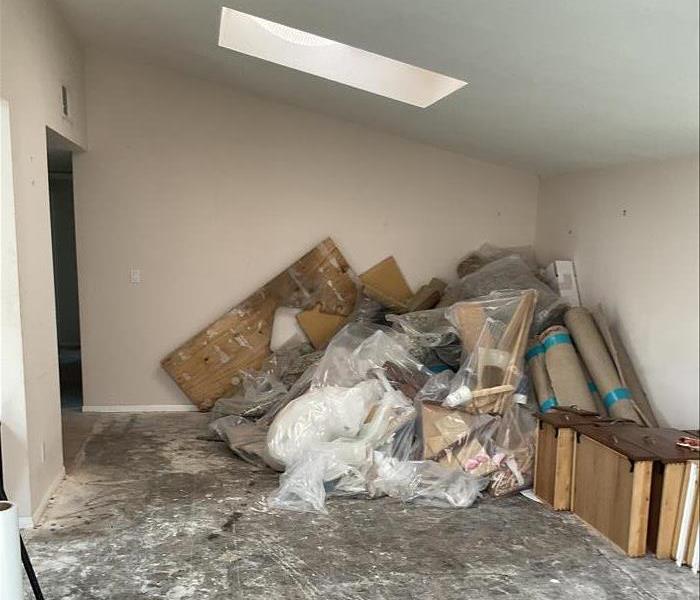 SERVPRO of Laguna Beach is here to help with expert restoration services.
SERVPRO of Laguna Beach is here to help with expert restoration services.
Standing water in your home may seem like a minor inconvenience, but it can pose significant risks if not addressed promptly. Whether it's due to a burst pipe, heavy rainfall, or a faulty appliance, standing water can lead to a host of issues that go beyond just water damage. Understanding these risks is crucial for protecting your property and maintaining a safe environment. Let’s delve into the personal risks associated with standing water in homes and explore expert insights on how to handle these situations effectively.
The Risks of Standing Water
Standing water can create a range of problems, from structural damage to increased risks of mold growth. Here’s a closer look at the dangers:
1. Structural Damage
Standing water can compromise the structural integrity of your home. Over time, water can seep into walls, floors, and foundations, causing materials to weaken and deteriorate. This can lead to sagging floors, cracked walls, and even foundational shifts. According to the Institute for Business & Home Safety (IBHS), prolonged exposure to water can lead to structural damage that may be costly to repair. For more information, visit IBHS on water damage.
2. Mold and Mildew Growth
One of the most pressing risks of standing water is mold growth. Mold thrives in damp environments, and standing water provides the perfect breeding ground. Mold can spread quickly, leading to extensive damage and requiring professional remediation to address. According to the Environmental Protection Agency (EPA), mold can grow within 24 to 48 hours of water exposure, making it crucial to address standing water immediately. Visit EPA on mold for more details.
3. Pest Infestations
Standing water can attract pests such as mosquitoes, rodents, and insects. Mosquitoes are particularly problematic, as they can breed in even small amounts of standing water. Rodents and insects may also seek out damp areas for nesting. These pests not only pose a nuisance but can also lead to additional damage and contamination in your home.
Expert Tips for Managing Standing Water
To effectively manage and mitigate the risks associated with standing water, consider these expert tips:
- Act Quickly: The sooner you address standing water, the less damage it will cause. Remove the water using a pump or wet vacuum as soon as possible. If the water is substantial, consider calling a professional restoration service like SERVPRO® of Laguna Beach to handle the situation.
- Dry and Dehumidify: Once the water is removed, thoroughly dry the affected area. Use dehumidifiers and fans to speed up the drying process and reduce moisture levels. This will help prevent mold growth and further damage.
- Inspect and Repair: Check for any damage to your home’s structure, including floors, walls, and foundations. Address any issues immediately to prevent further deterioration. If you find signs of mold, it’s essential to consult a professional for remediation.
- Monitor for Future Issues: Regularly inspect areas prone to water accumulation, such as basements and crawl spaces. Ensure that your home’s drainage system is functioning correctly and address any leaks or issues promptly.
Preventive Measures
Taking preventive measures can help you avoid dealing with standing water in the first place. Here are some steps you can take:
- Maintain Your Plumbing: Regularly inspect your plumbing system for leaks or issues. Addressing small problems before they become major issues can prevent water damage.
- Improve Drainage: Ensure that your home’s gutters and downspouts are clear and functioning properly. Proper drainage will help direct water away from your home’s foundation.
- Install a Sump Pump: In areas prone to flooding, a sump pump can be a valuable investment. It helps remove excess water from your basement or crawl space, reducing the risk of standing water.
Understanding and addressing the risks associated with standing water is essential for protecting your home and property. By acting quickly and following expert advice, you can minimize damage and prevent future issues. For professional assistance with water damage, SERVPRO of Laguna Beach is here to help with expert restoration services.
Protecting Your Property from Hail Damage in Laguna Beach, CA
9/18/2024 (Permalink)
Living in Laguna Beach, CA, you might not immediately think of hail as a common threat. However, when hail does strike, it can cause significant damage. Preparing for and mitigating hail damage is helpful to protect your property and minimize repair costs. Here’s a guide on how to mitigate hail damage effectively.
Understanding the Risk
While California is not typically known for severe hailstorms, they do occur, and when they do, the damage can be extensive. According to the Insurance Information Institute, hail causes about $1 billion in damage to crops and property each year in the United States. Even if hailstorms are less frequent in Laguna Beach, the impact when they happen can still be significant.
Pre-Storm Preparation
Proper preparation can significantly reduce the damage caused by hailstorms. Here are some effective strategies to consider:
Inspect and Maintain Your Roof
One of the most effective ways to mitigate hail damage is by ensuring your roof is in good condition. Regular inspections and maintenance can prevent minor issues from becoming major problems during a hailstorm. Replace any damaged or missing shingles and consider installing impact-resistant roofing materials.
Protect Windows and Skylights
Windows and skylights are particularly vulnerable during hailstorms. Installing storm shutters or impact-resistant windows can significantly reduce the risk of breakage. For skylights, consider using wire mesh screens or clear polycarbonate covers to provide an extra layer of protection.
Secure Outdoor Equipment and Vehicles
If possible, move vehicles and outdoor equipment indoors during a hailstorm. For items that cannot be moved, cover them with thick blankets or tarps to minimize damage. This simple step can save you from expensive repairs and replacements.
During the Storm
Taking appropriate actions during a hailstorm can help minimize damage and ensure safety.
Stay Indoors and Stay Safe
During a hailstorm, the safest place is indoors, away from windows and skylights. Hailstones can shatter glass and cause injury, so ensure that everyone stays in a protected area of the building until the storm passes.
Post-Storm Actions
After the storm has passed, it's important to inspect and address any damage to your property.
Inspect Your Property for Damage
After the storm, carefully inspect your property for any signs of damage. Pay attention to the roof, windows, siding, and any outdoor equipment. Document any damage with photographs, as this will be crucial for insurance claims.
Contact Your Insurance Company
If you find significant damage, contact your insurance company immediately to start the claims process. Provide them with the documentation you gathered, including photographs and any repair estimates. According to the National Association of Insurance Commissioners (NAIC), detailed records can expedite the claims process and ensure you receive the appropriate compensation.
Hire Professional Repair Services
For extensive damage, it’s best to hire professional repair services. Attempting to fix severe damage yourself can be dangerous and may not be covered by insurance if not done correctly. SERVPRO of Laguna Beach/Dana Point is ready to help with expert storm damage restoration services and will return your home or business to its pre-storm condition quickly and efficiently.
Final Thoughts on Hail Damage Prevention
Hailstorms, while less frequent in Laguna Beach, CA, can still cause significant damage when they occur. If you need professional assistance with storm damage restoration, don’t hesitate and call SERVPRO of Laguna Beach/Dana Point. Our team is here to help you recover quickly and effectively!
Understanding the Differences Between Smoke and Fire Damage
8/14/2024 (Permalink)
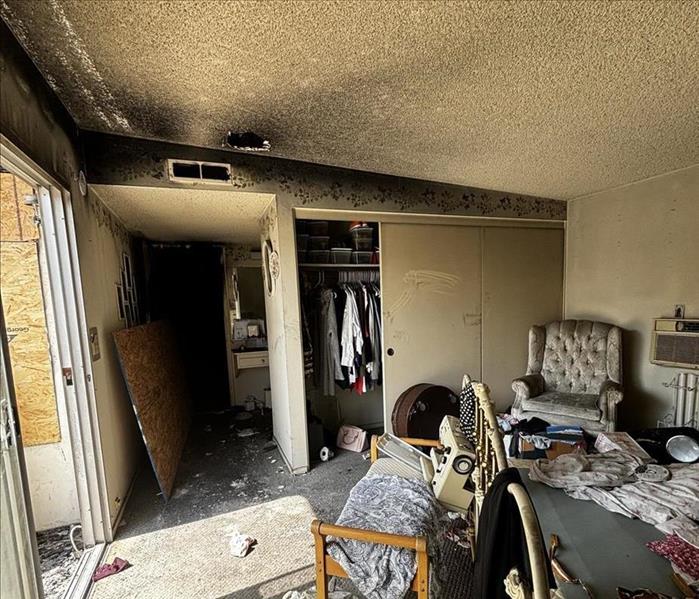 Both types of damage require specific cleaning and restoration techniques to ensure your home is safe and livable.
Both types of damage require specific cleaning and restoration techniques to ensure your home is safe and livable.
Experiencing a fire in your home is a traumatic event. Beyond the immediate danger, fires leave behind significant damage that can be challenging to address. Understanding the difference between smoke and fire damage is crucial for effective cleanup and restoration. In this blog, we’ll explore the distinctions between these two types of damage and why it’s essential to address both.
Fire Damage: The Immediate Impact
Structural Damage
Fire damage refers to the destruction caused directly by the flames. This includes burnt and charred structures, such as walls, ceilings, and floors. The intensity of the fire determines the extent of this damage, which can sometimes lead to partial or total structural failure.
Heat Damage
Heat from a fire can cause severe damage beyond what the flames touch. High temperatures can warp metal, crack glass, and cause paint to blister and peel. This type of damage is often overlooked but can compromise the integrity of various materials in your home.
Water Damage
Ironically, water damage is often a significant component of fire damage. Firefighting efforts typically involve large amounts of water to extinguish the flames, leading to soaked carpets, walls, and furniture. This moisture can promote mold growth if not addressed promptly.
Smoke Damage: The Lingering Effects
Odor
One of the most persistent issues after a fire is the smell of smoke. Smoke particles are incredibly small and can embed themselves in fabrics, furniture, and other porous materials. This can cause a lingering odor that is difficult to eliminate without professional cleaning.
Residue and Soot
Smoke leaves behind a greasy, black residue known as soot. Soot can cover surfaces throughout your home, from walls and ceilings to furniture and personal items.
Discoloration
Smoke can cause discoloration on walls, ceilings, and other surfaces. This staining can range from light yellowing to severe black streaks, depending on the intensity and duration of the fire. Smoke damage can also tarnish metal and cause etching on glass.
Why Address Both Types of Damage
Property Value
Failure to address smoke and fire damage can significantly reduce the value of your property. Lingering odors, visible soot, and structural issues can deter potential buyers and decrease the overall market value of your home.
Preventing Further Damage
Smoke and soot are acidic and can cause further damage over time. They can corrode metals, stain surfaces permanently, and degrade materials. Immediate and thorough cleaning is necessary to prevent additional deterioration.
Professional Restoration Services in Laguna Beach, CA
Professional restoration services are often necessary due to the complexity of fire and smoke damage. Here’s why you should consider hiring experts:
Expertise and Equipment
Professional restoration companies, like SERVPRO®, have the expertise and specialized equipment needed to clean and restore your home effectively. This includes industrial-grade cleaners, air scrubbers, and deodorizers.
Comprehensive Cleaning
Professionals can provide comprehensive cleaning that goes beyond surface-level damage. This includes cleaning air ducts, treating upholstery, and addressing hidden damage that might not be immediately visible.
Insurance Assistance
Dealing with insurance claims can be overwhelming after a fire. Professional restoration companies often assist with the documentation and communication needed to ensure your claim is processed smoothly and that you receive the compensation you deserve.
Moving Forward
Understanding the difference between smoke and fire damage is crucial for effective recovery after a fire. Both types of damage require specific cleaning and restoration techniques to ensure your home is safe and livable. If you’ve experienced a fire in Laguna Beach, CA, contact SERVPRO of Laguna Beach/Dana Point for expert help in restoring your home. Our team is dedicated to making your property look and feel like new again, ensuring both your safety and peace of mind.
Steps to Avoid Mold During Home Renovations
7/17/2024 (Permalink)
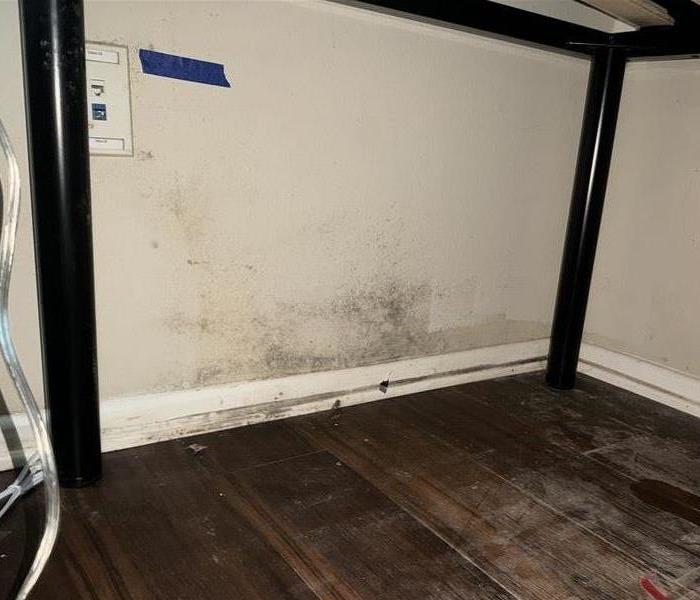 By following these detailed steps, you can significantly reduce the risk of mold growth during your home renovations.
By following these detailed steps, you can significantly reduce the risk of mold growth during your home renovations.
Home renovations can breathe new life into your home but can also expose it to mold if moisture isn't controlled. Below are detailed steps to ensure your renovations are mold-free.
1. Identify Potential Problem Areas
Begin by thoroughly inspecting your home for any signs of existing mold or areas that are likely to develop mold, such as damp corners, basements, or under sinks. Look for discolored walls or ceilings which may indicate moisture problems. Addressing these issues before you start renovating can prevent mold from becoming a larger issue later.
2. Keep the Area Dry
Use dehumidifiers in the renovation area, especially if you're working in naturally damp places like basements. Cover the soil in crawlspaces with plastic sheeting to reduce humidity coming from the ground. Ensuring that the workspace remains dry is key in preventing mold growth, as mold spores thrive in moist environments.
3. Use Mold-Resistant Materials
Investing in mold-resistant materials can be crucial, especially in areas prone to moisture. Opt for mold-resistant drywall, which is treated to resist moisture and the growth of mold. Use paints and primers that contain mold inhibitors. These materials may cost more upfront but can prevent mold issues in the future, making them a worthwhile investment.
4. Seal Off Construction Areas
To prevent mold spores from spreading to other parts of the house, use heavy plastic sheeting to isolate the construction area. This not only helps in containing dust and debris but also minimizes the spread of mold spores that can be disturbed during construction.
5. Manage Water and Moisture
Be vigilant about water use in the construction area and be quick to clean up spills or leaks. If you discover any plumbing issues, address them promptly before proceeding with further renovations. It's important to ensure that all surfaces are dry before closing up walls, installing insulation, or laying flooring.
6. Properly Ventilate
Use fans to increase air circulation in the work area and open windows where possible to allow fresh air in and moisture out. Good ventilation is essential in reducing the humidity levels that mold spores need to grow.
7. Inspect and Clean HVAC Systems
Mold spores can easily spread through HVAC systems, which can distribute these spores throughout your home. Before and after renovations, have your HVAC system checked and cleaned to ensure it's not harboring any mold and is functioning efficiently to maintain good air quality.
8. Final Cleanup
After construction is complete, a thorough cleaning is necessary to remove any remaining dust and debris, which can harbor mold spores. Vacuum with a HEPA filter and wipe down all surfaces. It might be beneficial to hire professional cleaners to ensure that the area is meticulously cleaned.
By following these detailed steps, you can significantly reduce the risk of mold growth during your home renovations. Proactive moisture management, using appropriate materials, and keeping things clean will help keep your newly renovated space both beautiful and mold-free. If you have concerns about mold or need assistance with mold prevention, don't hesitate to contact our SERVPRO of Laguna Beach team today!
Drying Techniques: Air Movers, Dehumidifiers, and More
6/12/2024 (Permalink)
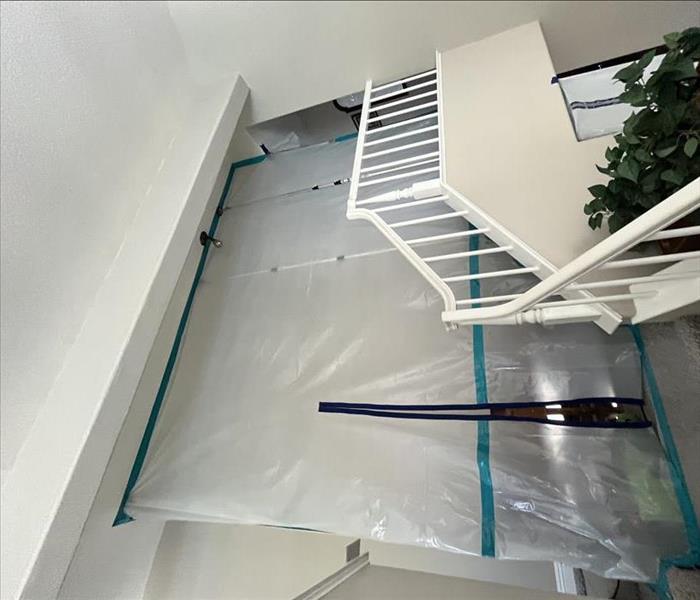 Our team uses dehumidifiers and containment systems to help with the drying process after water damage!
Our team uses dehumidifiers and containment systems to help with the drying process after water damage!
Effective drying techniques are crucial in the restoration process following water damage to prevent further issues such as mold growth and structural damage. Utilizing specialized equipment and proven drying methods is essential to ensure thorough and efficient drying of affected areas. In this blog, we will discuss the significance of air movers, dehumidifiers, and other drying techniques employed by SERVPRO® professionals to restore properties after water damage.
Air Movers
Air movers, also known as industrial air blowers, are essential tools used in the drying process after water damage. These high-velocity fans work to accelerate the evaporation of moisture from wet surfaces, such as flooring, walls, and furniture. By creating a continuous airflow over the affected areas, air movers expedite the drying process, mitigating the risk of secondary damage and mold growth.
Strategic placement of air movers is crucial to maximize their effectiveness. SERVPRO professionals assess the affected areas to determine the optimal positioning of air movers, ensuring that the airflow reaches all impacted surfaces.
Dehumidifiers
Dehumidifiers play a vital role in reducing the moisture content in the air and extracting excess humidity from the environment. After water damage occurs, the air in the affected areas becomes saturated with moisture, creating an environment conducive to mold growth and further damage.
Professional-grade dehumidifiers employed by SERVPRO are designed to efficiently remove excess moisture from the air, contributing to the overall drying process. By continuously circulating and dehumidifying the air, these units help maintain optimal humidity levels, promoting thorough and effective drying of the affected spaces.
Moisture Detection and Monitoring
In addition to air movers and dehumidifiers, moisture detection and monitoring devices are utilized to assess the extent of water damage and track the progress of the drying process. Moisture meters, thermal imaging cameras, and hygrometers are among the advanced tools used by SERVPRO professionals to accurately measure moisture levels in building materials and the surrounding environment.
Regular monitoring and documentation of moisture levels are integral to ensure that the drying techniques are achieving the desired results. By continuously assessing the moisture content and tracking the drying progress, restoration professionals can make informed adjustments to the drying strategy as needed, ensuring thorough and consistent drying of the affected areas.
Specialized Drying Techniques
In circumstances where water damage is extensive or unique drying challenges are present, SERVPRO may employ specialized drying techniques to address the specific needs of the situation. Injectidry systems, desiccant dehumidifiers, and heat drying methods are among the specialized techniques that can be utilized to effectively dry hard-to-reach areas, sensitive materials, or environments with specific drying requirements.
Each specialized drying technique is tailored to meet the unique demands of the restoration project, providing comprehensive drying solutions to address complex scenarios and expedite the restoration process.
Effective drying techniques, including the strategic use of air movers, dehumidifiers, and specialized drying methods, are critical in the restoration of properties following water damage. By leveraging professional-grade equipment and proven drying techniques, SERVPRO professionals consistently achieve thorough and efficient drying, minimizing the impact of water damage and restoring properties to preloss condition. If you require assistance with water damage restoration, contact SERVPRO for professional and reliable restoration services.
Mitigating Hail Damage to Your Home or Business
5/15/2024 (Permalink)
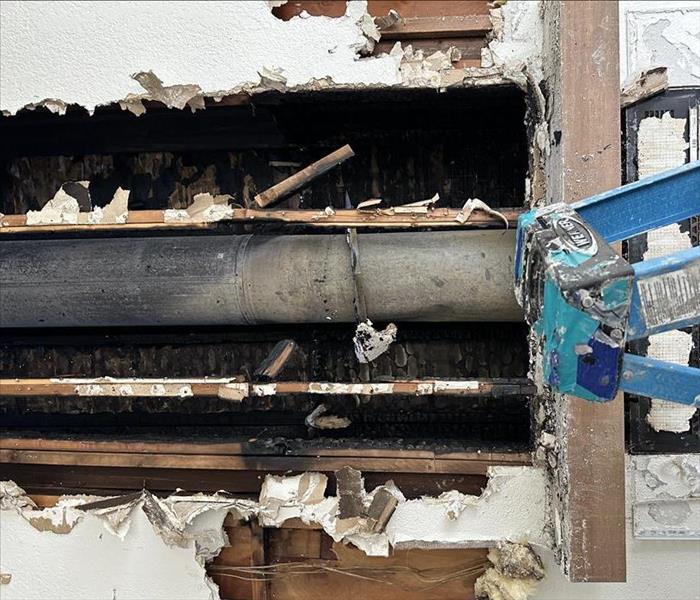 In this blog, we'll explore how to mitigate hail damage to your home or business.
In this blog, we'll explore how to mitigate hail damage to your home or business.
Hail is a type of severe weather that can cause significant damage to homes and businesses. It occurs when strong updrafts and turbulent winds within thunderstorms cause raindrops to freeze into small ice pellets that fall to the ground with considerable force. Depending on the size and density of the hailstones and the severity of the storm, hail can cause substantial damage to roofs, windows, and other parts of your home or business. In this blog, we'll explore how to mitigate hail damage to your home or business.
Check Your Insurance Coverage
Before hail season arrives, you should review your insurance coverage to understand what is included in your policy and what isn't. Understanding your coverage options can help you prepare financially for potential hail damage repairs.
Additionally, consider adding hail damage coverage to your policy if it isn't already included. This extra coverage can provide you with an added layer of protection in the event of hail damage. Be sure to consult your insurance agent and read your policy thoroughly to obtain a better understanding of your coverage options.
Inspect Your Property
It's crucial to inspect your home or business before hail season begins to identify weak spots or potential areas of damage. Pay particular attention to your roof, windows, doors, and other exterior structures that might be vulnerable to hail damage.
If you identify any issues, schedule repairs or maintenance before hail season arrives to mitigate any potential damage.
Install Protective Measures
One of the most effective ways to prevent hail damage is by installing protective measures on your property. For instance, you can install impact-resistant windows and doors to minimize hail damage.
Additionally, you can install hail-resistant roofing materials to protect your roof from hailstones. Speak with roofing companies to evaluate your options for hail-resistant materials. Hail guards or screens can also be a good solution to protect your AC unit and other exterior appliances.
Secure Outdoor Items
During hail season, it's essential to secure any loose items around your property. Secure lawn furniture, potted plants, grills, and any other loose items that can become a projectile in strong winds and hailstorms.
In addition, make sure to park your vehicles in a covered area or garage to protect them from hail damage. If you do not have a garage, use tarps to cover your car temporarily.
Repair Any Existing Damage
If your property has existing damage, such as a leaky roof or broken window, it's critical to have it repaired promptly. Hail can exacerbate existing damage, resulting in more costly repairs if left unaddressed.
Conclusion
Hailstorms are a common occurrence in many parts of the country and can cause significant damage to your property. By following these mitigation strategies, you can reduce your risk of hail damage and ensure your home or business is protected.
Inspecting your property, installing protective measures, securing outdoor items, repairing any existing damage, and checking your insurance coverage can limit the impact of hail damage on your property.
In the event that hail damage does occur, contact SERVPRO® for quick and efficient restoration services. Our team of experts has the experience, knowledge, and equipment to restore your property to its pre-damage condition and minimize the interruption to your life and your business. Don't let hail damage get you down - take the necessary steps to protect your property and contact SERVPRO if you need assistance.
The Importance of Roof Fireproofing: Protecting Your Home from Fire Damage
4/17/2024 (Permalink)
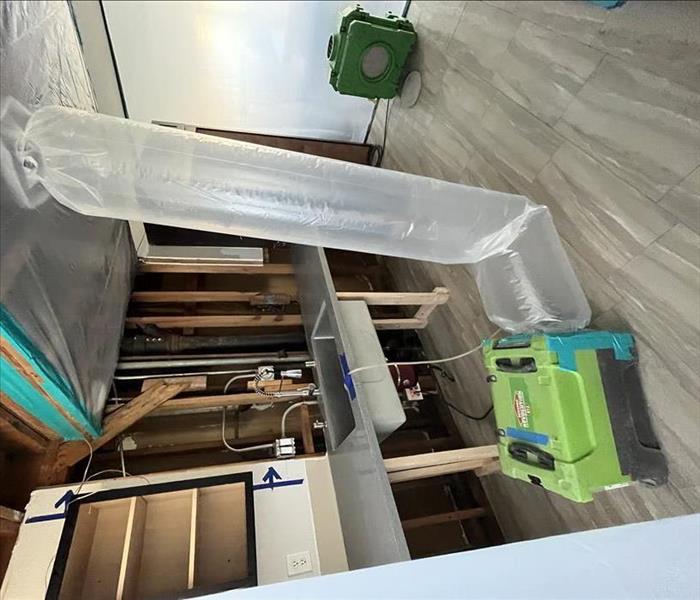 In this blog, we will explore the importance of roof fireproofing and provide insights into how to effectively fireproof your roof.
In this blog, we will explore the importance of roof fireproofing and provide insights into how to effectively fireproof your roof.
When it comes to protecting your home from fire damage, considering roof fireproofing is essential. Your roof plays a vital role in safeguarding your property and personal belongings from potential fire hazards. In this blog, we will explore the importance of roof fireproofing and provide insights into how to effectively fireproof your roof. By taking these precautions, you can significantly reduce the risk of fire damage and ensure the safety of your home.
Enhanced Fire Resistance
Fireproofing your roof significantly enhances its fire resistance capabilities. During a fire, a fireproof roof can act as a barrier, preventing flames and heat from penetrating the structure. Fireproof materials, such as fire-rated shingles or tiles, provide an added layer of protection and can help in reducing fire damage to your property.
Minimizing Fire Spread
An unprotected roof can allow fire to rapidly spread to other areas of your home, increasing the risk of severe fire damage. Fireproofing your roof acts as a barrier to prevent flames from spreading to other parts of the house. By containing the fire, you can protect your personal belongings, reduce smoke damage, and limit the need for extensive fire damage restoration.
Prevention of Ember Attacks
During wildfires or neighboring structures on fire, ember attacks pose a significant threat to homes. Embers can be carried by wind and land on your roof, potentially igniting flammable materials and causing fire damage. A fireproof roof can significantly reduce the chances of ember ignitions, providing an added layer of protection for your property and personal belongings.
Compliance with Local Building Codes
Many regions have specific building codes that require the use of fire-resistant materials for roofs, especially in areas prone to wildfires. By fireproofing your roof accordingly, you ensure compliance with local regulations and contribute to overall community fire safety.
Fireproofing Methods for Roofs
Fire-Rated Shingles or Tiles
Consider using fire-rated shingles or tiles specifically designed to withstand fire exposure. These materials have increased fire resistance and can provide better protection during a fire.
Use of Fire-Resistant Underlayment
Install a fire-resistant underlayment beneath your roofing material. This extra layer adds another level of protection by preventing flames from penetrating through the roof structure.
Regular Roof Maintenance
Regularly inspect and maintain your roof to identify any potential fire hazards promptly. Keep the roof clean and clear of debris, ensuring there are no flammable materials near HVAC units or chimneys.
Proper Ventilation
Ensure your roof has adequate ventilation to prevent the accumulation of heat, which can increase the risk of fire damage. Proper airflow helps mitigate the chances of fire outbreaks.
Professional Assistance
Consult with professional fire damage restoration services, like SERVPRO®, who can provide expert advice and assistance with fireproofing your roof. They have the knowledge and expertise to evaluate potential fire risks and recommend suitable fireproofing measures.
Roof fireproofing is paramount when it comes to protecting your home and personal belongings from fire damage. By enhancing fire resistance, minimizing fire spread, and preventing ember attacks, a fireproof roof offers significant advantages in ensuring the safety of your property. Consider using fire-rated shingles or tiles, installing fire-resistant underlayment, and maintaining regular roof upkeep. Always consult with professionals, such as SERVPRO, for expert guidance on effective fireproofing methods. By taking these precautions, you can significantly reduce the risk of fire damage and provide a safer living environment for you and your loved ones.





 24/7 Emergency Service
24/7 Emergency Service
